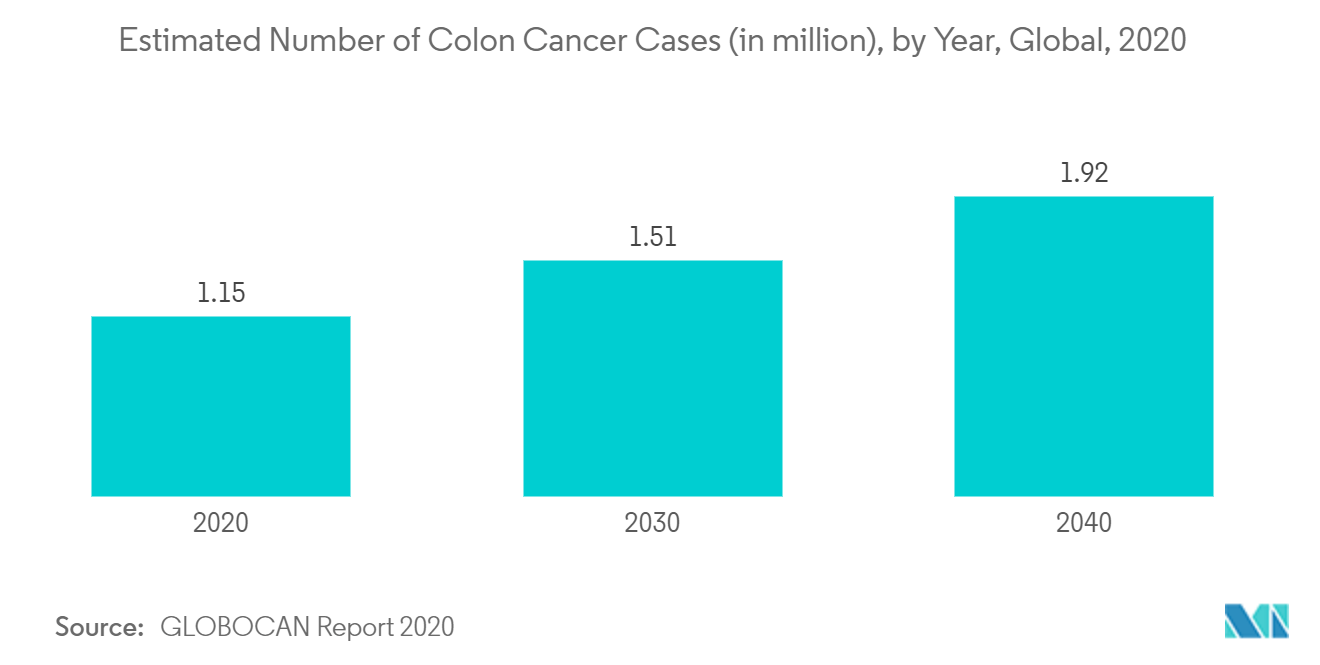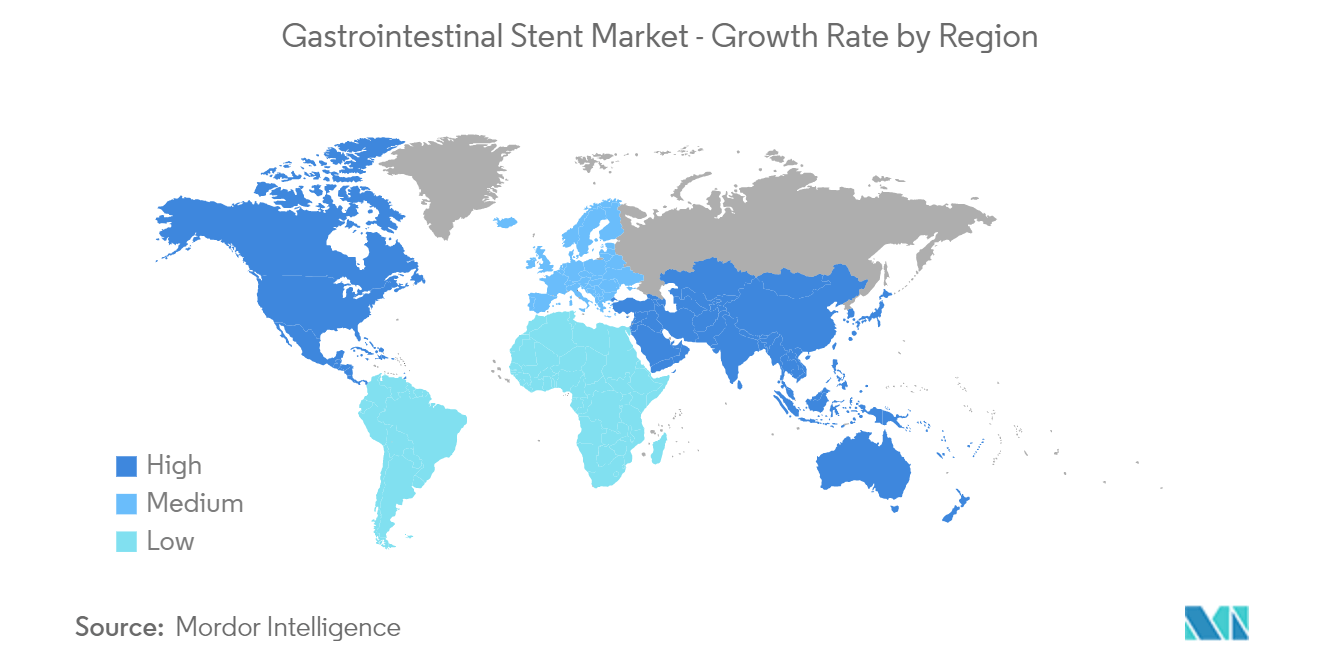Market Trends of Global Gastrointestinal Stent Industry
This section covers the major market trends shaping the Gastrointestinal Stent Market according to our research experts:
Colorectal Cancer is Expected to Show Rapid Growth Over the Forecast Period
The growth of the colorectal cancer segment is majorly associated with high incidence rates of colorectal cancers across the world. The rising geriatric population is also one of the prominent drivers, as old age is the most critical risk factor for the disease.
According to the American Cancer Society 2020, the overall lifetime risk of developing colorectal cancer is about 1 in 22, or 4.49% for men, and 1 in 24, or 4.15% for women. The same report as above has stated that about 53% of colorectal cancer cases occurred in developed countries (countries having HDI above 0.8). These countries, while home to less than a quarter of the global population, have a disproportionately large number of people suffering from colorectal cancer. Similarly, as per the report published by the Indian Council of Medical Research in 2021, the incidence of colorectal cancer in 2021 was around 3.9 per 100,000 women and 4.4 per 100,00 men across the country. The same report has stated that the number of people suffering from colorectal cancer in India is on the rise. Hence, with increasing colorectal cancer cases, the market studied is expected to witness healthy growth over the forecast period.
Additionally, as per the data published in June 2021 by Digestive Medicine Research (DMR) Journal, stenting is gaining attention worldwide for the treatment of colorectal cancer. As minimally invasive surgery allow the patients to recover faster, it is widely being used in several hospitals. Hence, owing to the significance of GI stents and the presence of global companies in the stenting business, the segment is expected to witness growth over the forecast period.

North America is Expected to Dominate the Gastrointestinal Stent Market Over the Forecast Period
North America is one of the most developed medical device industries and is expected to dominate the market studied. The increasing prevalence of obstructive gastrointestinal diseases, favorable reimbursement policies, the aging population, the presence of major market players, etc., are the primary factors behind the large market size. According to the Centers for Disease Control and Prevention, in 2020, the number of adults diagnosed with ulcers was recorded to be 14.8 million and the number of visits to emergency departments for diseases of the digestive system being the primary diagnosis was 7.9 million in the United States.
Moreover, the COVID-19 infection is noted to be more severe in patients with co-morbid conditions, such as immunosuppressed, malnourished, and immunocompromised. Inflammatory bowel disease (IBD), generally includes Crohn's disease and ulcerative colitis. According to a research study by MalihaNaseer published in the World Journal of Meta-Analysis in October 2020, in the United States, the management of inflammatory bowel disease (IBD) patients was often complex and posed unique challenges for gastroenterologists during the COVID-19 pandemic. The study results found that, during the COVID-19 pandemic 2020, IBD patients continued their medications and followed universal precautions. As a result of COVID-19, the market was affected in the short term.
However, with the increasing prevalence of GI diseases across the North American region, the market for GI stents is believed to grow rapidly over the forecast period.


